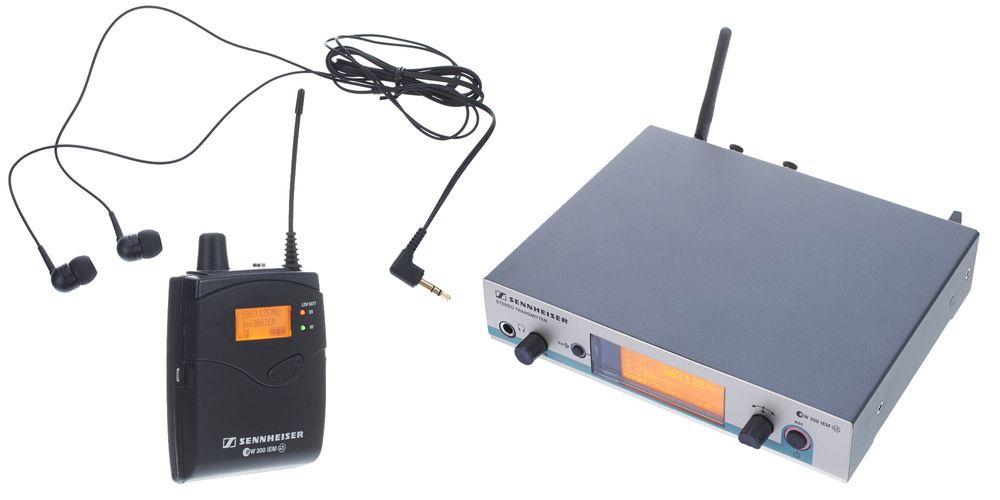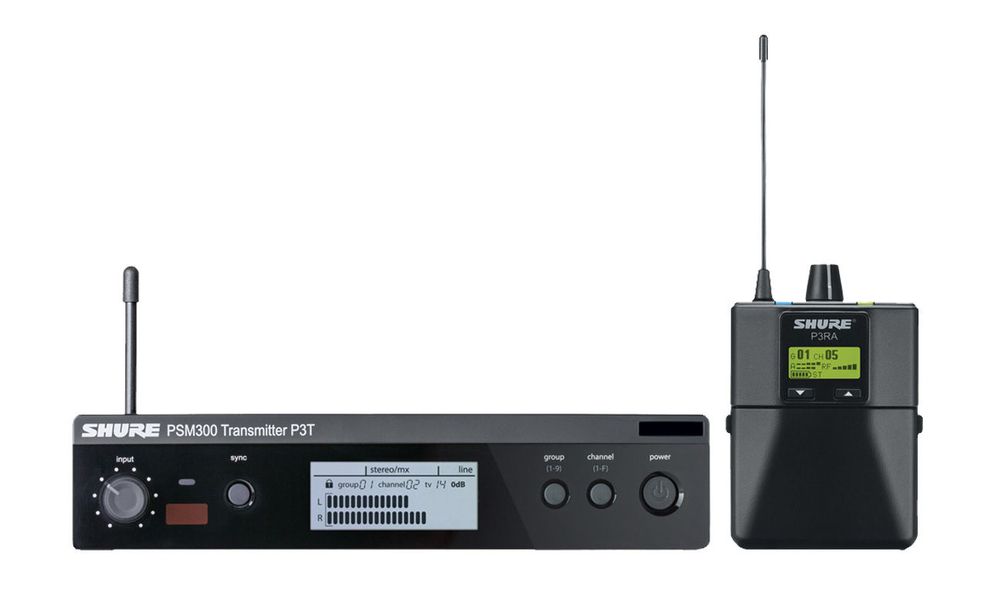11. Wireless Systems
One notable option is the possibility of wirelessly transmitting the monitor signal.
The unbeatable advantage of wireless systems undoubtedly lies in the greater freedom of movement. Gone is the annoying cable between the earpiece and the mixing console or stage box.
However, one downside lies in the significant extra effort and the associated cost, as well as in the increased susceptibility to interference of the system. It is never entirely ruled out that frequencies (including external ones) may overlap or there may be "dropouts". However, with some devices, you can now choose from many pre-set frequencies or use an "Auto-Tune" function to search for free frequencies, minimizing disturbances.
For those who find wireless technology uncomfortable and are sensitive to it (think "electrosmog"), buying carefully should be considered.
As mentioned earlier, a pair of good earphones and a cable can be purchased for around €150, whereas a good wireless system can cost up to five times as much.
The principle is simple:
A transmitter receives a signal from the monitor or hall mixer. A preset transmission frequency (for example, 833.xx MHz, which would be in the E-band of mobile phones) transmits the modulated useful signal (own voice, complete mix, etc.) to a receiver, which is attached to the belt, for example. Usually, 2 channels are transmitted. Depending on preference, you can transmit either a stereo signal or a monitor mix sum and the personal monitor sound (with your voice). For monitoring, a simple mono signal is often sufficient for many musicians. Therefore, most receivers can switch between channel 1 mono and channel 2 mono, in addition to the 2-channel playback. Thanks to this convenient function, two independent receivers can be operated on one transmitter, which significantly saves on band budget.
From the bodypack receiver, it goes through a 3.5mm mini jack and the in-ear earphone to the inclined ear of the singer and/or musician. Some in-ear systems have a limiter integrated - this prevents the ears from being fired with too high level peaks.

Sennheiser EW 300 IEM System
For those who don't want to leave it up to the person at the mixing console to determine the overall composition of the entire in-ear signal, they can fine-tune the volume ratios themselves with a different design.
A suitable model for this can be seen in the image here:

Shure PSM 300 Two-Channel System
Conclusion:
For those who can afford it, a wireless system is recommended; they will quickly appreciate the freedom of movement.
For those who prefer to get used to this new and unfamiliar form of monitoring first, they should opt for a simple wired system. With the Shure system shown above, it would also be possible as an intermediate solution to initially only buy the headphones with the receiver, which would be a wired system. However, you would at least have control over the final volume (potentiometer on the receiving part) and would also be additionally protected by the integrated limiter. Not a bad entry into the wireless world, and when the cash is replenished, you can add the transmitter.




